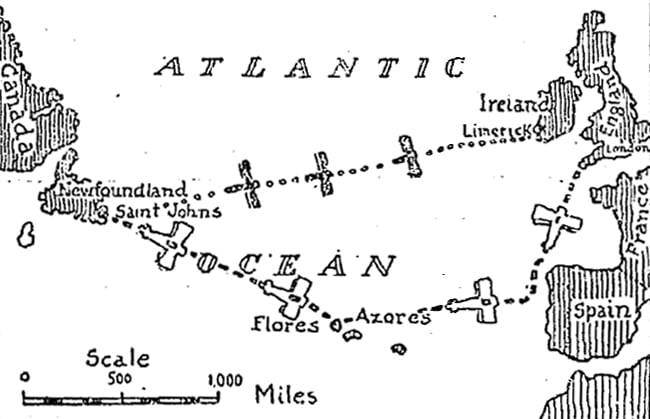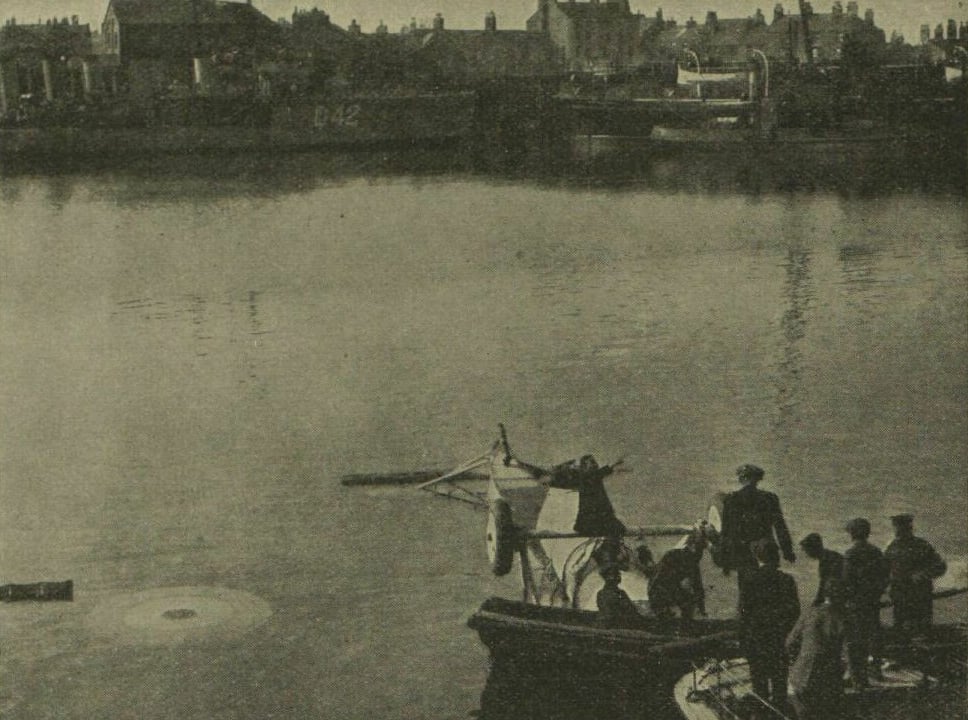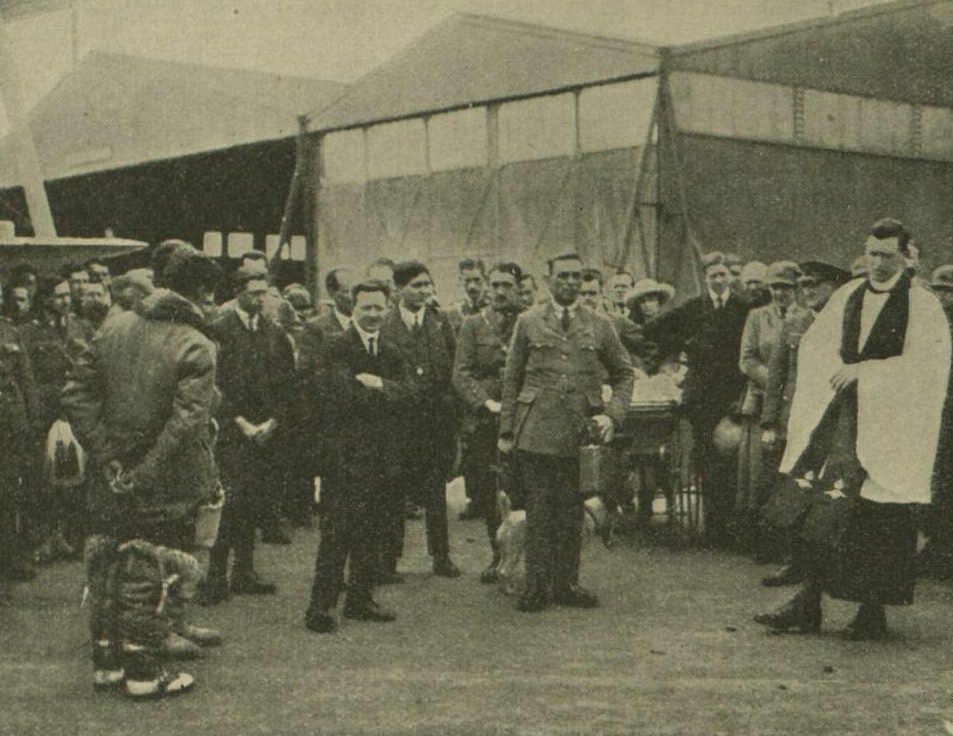Aviators in race to fly across the Atlantic
Newfoundland, 22 April 1919 - The Daily Mail’s £10,000 prize for the first aviator to cross the Atlantic has drawn considerable attention, and teams from around the world are preparing their machines and waiting for favourable weather conditions.
Australian Harry Hawker is currently in St John’s, Newfoundland, from where departure seems unlikely for the foreseeable future, with weather experts predicting that the period of cold and fog will continue.

The dotted route above shows Hawker's official route, while the dash route over the Azores is an alternative route (Image: Irish Independent, 15 April 1919)
Another competitor, Mr Fairey, is still working on his aircraft. Fairey’s machine won’t be ready for another 3 weeks and he expressed confidence he can complete the transatlantic journey in 14 to 15 hours. The seaplane reached speeds of 120 miles per hour on war work and is reputed to be capable of 20 hours of continuous travel.
The attempt of Major Woods failed before it began; he and his copilot went down over the Irish Sea after the engine failed, on the way from Eastchurch to their starting point in Bawnmore, Co. Limerick. Both men were rescued and were disappointed but in good health.
A Reuter’s telegram yesterday from St John’s reports that prospects for transatlantic flight are now the subject considerable local betting. The odds are now 5 to 1 against any aviator successfully completing the crossing and a single bet of £2,000 against the flight being accomplished has been laid by a wealthy Newfoundland merchant.

Salvaging Major Woods aircraft from the sea. (Image: Illustrated London News, 26 April 1919)
Economic opportunities
Transatlantic flight presents a challenge to both human endurance
and mechanical ingenuity. It also presents a massive social and
economic opportunity to Ireland according to the
Irish Times:
‘American financiers on the look-out for new channels of investment seeking them here, might verify their surmises in the swing of a day; take their lunch in the Cork Imperial, and their dinner in the New York Waldorf Astoria; might speak of the bad weather in Dublin and New York in the same breath, and bring to bear on the rotten administration of the Dublin Corporation all the ‘gip’ and ‘drive’ of Wall Street intellect and address.’
[Editor's note: This is an article from Century Ireland, a fortnightly online newspaper, written from the perspective of a journalist 100 years ago, based on news reports of the time.]





















